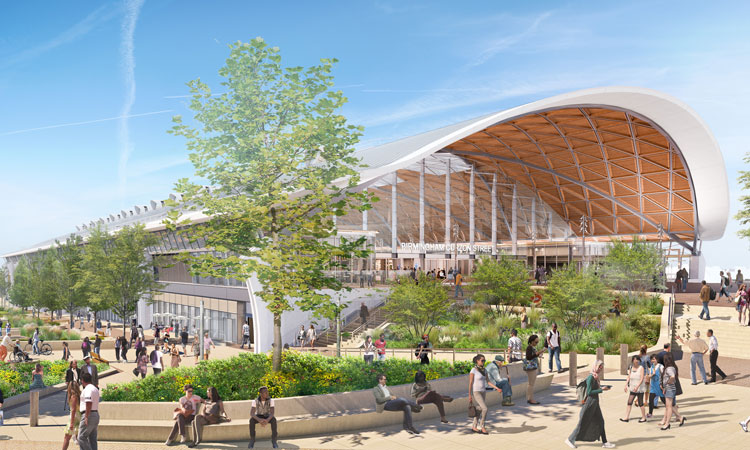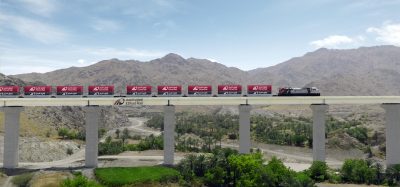HS2’s Curzon Street station design achieves 55 per cent carbon reduction
Posted: 4 August 2020 | Global Railway Review | No comments yet
HS2’s Birmingham Curzon Street station is set to achieve net zero carbon emissions from regulated energy consumption and use a range of technologies to generate energy from renewable sources.


Credit: HS2 Ltd
HS2’s Birmingham Curzon Street station is set to reduce carbon emissions by an unprecedented 55 per cent. Through innovative design, there are over 40 opportunities for carbon reduction, resulting in a reduction in the station’s lifetime emissions by over 87,000 tonnes of CO2 equivalent – that’s the same as removing the emissions of over 10,000 houses, or the equivalent of travelling 500 million kilometres in your car.
The station will achieve net zero carbon emissions from energy consumed to operate building integrated systems, such as heating, cooling and lighting through reducing energy demand and consumption – for example by using LED lighting – and generating low carbon energy through 2,855m2 of solar panels on the platform canopies and Ground Source Heat Pumps.
It will also transform a previously deprived area of land into a new green public realm in the heart of Birmingham city centre to serve future generations.
Hannah Leggatt, HS2’s Environment Manager for Curzon Street station said: “Using renewable technologies and lean design, Curzon Street station will be a shining example of how HS2 is helping the UK to achieve net zero carbon emissions by 2050. Working with our supply chain, HS2 is pushing the boundaries of innovations in carbon reduction and leading the way in developing the green infrastructure of the future.”
The HS2 Curzon Street team, with WSP as lead consultant, Grimshaws as building architect, and Grants Associates as landscape and public realm lead, have been working for over two years to achieve a striking architectural statement that also minimises impacts on the environment, while creating opportunities for businesses and communities alike.
WSP’s flagship Midlands office is in Birmingham’s iconic Mailbox, where 160 people, including a number of apprentices, have worked together to engineer sustainable, resilient outcomes, putting the new station at the forefront of innovations in green infrastructure.
Tim Danson, WSP’s Environment and Sustainability Lead for Curzon Street station, said: “The sustainability credentials for Curzon Street station are significant, not least the pathway we have developed to achieve an unprecedented 55 per cent carbon emissions reduction over the 120-year lifecycle (for a scheme of this scale and nature). Addressing carbon in the built environment is an important way in which the UK will transition to a net zero society by 2050, and we’re pleased this station will be net zero in operation.
“HS2 and the delivery team have set the bar very high when it comes to sustainability. Responding to HS2’s socio-environmental ambitions, our multi-discipline team was responsible for weaving a thread of future-ready sustainability throughout the design. Over 40 delivery partners have been involved in the design, collaborating to develop the scheme across technological, carbon, climate, biodiversity, community and materials themes.”
The design has recently been validated through the BREEAM Excellent rating, which is an industry recognised standard for buildings that reduce energy usage and materials waste, and minimise impact on the natural environment.
It has also been shortlisted as a finalist in the Institute of Environmental Management and Assessment (IEMA) awards which recognise projects that are helping to transform the world in the sustainability field.
Innovations include rainwater harvesting, the use of photovoltaics and incorporating recycled or renewable materials. There are also opportunities to use low carbon energy, reduce embedded carbon in construction materials, and reduce carbon emissions from construction work.
The station will form an integral part of major new transport changes for the city as a whole, incorporating the Midland Metro running alongside and underneath the station, new pedestrian routes and access to new local bus and train services.







